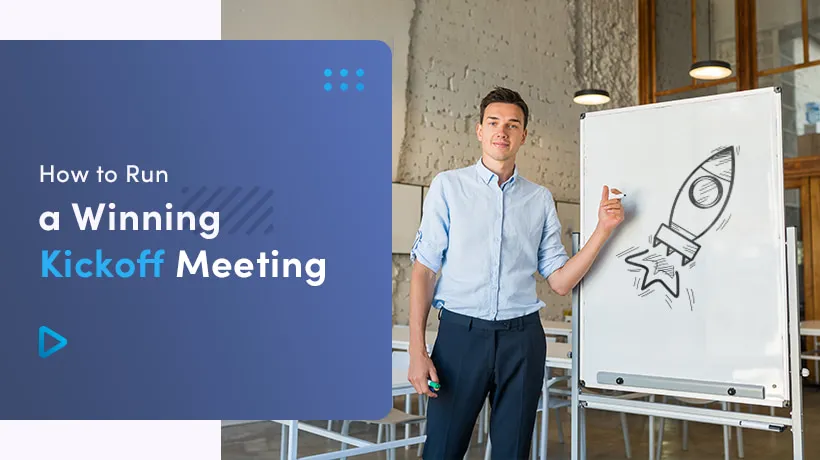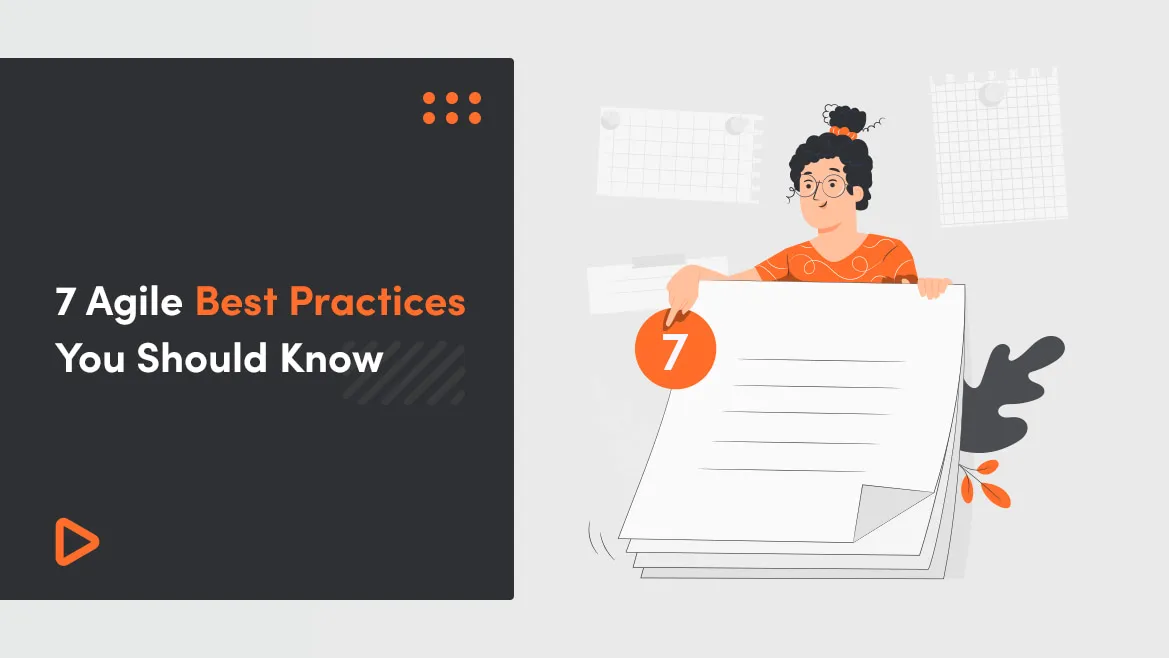Imagine that you’ve got your next project in mind, you’ve got a timeline, budget and you’re thinking about getting started. The question is how do you make sure that you’re on the same page as your team and your clients before this happens?
Running a top tier kickoff meeting, of course - and we’re here to help with the following:
- Finding out what a kickoff meeting actually is, and learning how to run it properly.
- 10 top tips for your kickoff meeting.
- Planning an agenda.
- The best questions to ask during your kickoff meeting.
- What to do after the kickoff meeting.
We can help you with all of the above in a number of ways. But, before you get planning your amazing kickoff meeting, make sure you read on to find out everything you’ll need to know about it!
What is a kickoff meeting and why is it important to run it properly?
A project kickoff meeting is a fundamental part of the project initiation. It’s either an internal (within your team) or external (between the team and the client) meeting that covers a number of areas, each of which we will discuss later on in this article.
Firstly, let’s take a look at why a successful project kickoff meeting can really enhance the overall success of your project.
What is the purpose of a kickoff meeting?
Your kickoff meeting will be a hugely important part of the project as it has the following benefits for you and your work. The meeting should:
- introduce the team to potential clients, which helps with team members to client chemistry and mutual understanding of the project. You could also introduce any project stakeholder at this stage;
- define a project timeline so that people know what needs to be done at exactly what time;
- be ornamental in setting the tone of the project. This will ensure that everybody is on the same page regarding the functions, aesthetics and any other part of the project.
Ultimately, a kickoff meeting's goal is to instill confidence in each participant about the project's direction by establishing common goals, setting clear expectations, and consolidating requirements. To achieve this, understanding the nature of conversations in a project kickoff meeting is crucial.
You can also consider introducing an Event Storming session, which is really helpful during the first phase of software development. It enables to achieve a comprehensive and common understanding of the processes which should be transformed from the idea and vision into working software. Read more on Event Storming in my previous articles Event Storming: How It Will Improve Your Business Processes? and How To Run Your First Event Storming Session.
What is discussed in a project kickoff meeting?

An effective kickoff meeting agenda should, at a minimum, cover:
- Who the project team is, who to talk to about which things, and who the clients are.
- What the client, or project manager is looking for. Define a statement of work.
- The scope of the project - how much work is actually going to go into this project, and how time-consuming it could be.
- Thorough project planning.
- Motivational points. Get everybody excited about the work that they are about to embark on.
- The business case for the project.
We’ll show you how to put together a kickoff meeting agenda in more detail later on. But let’s take a look at agile project kickoffs first.
What about agile project kickoffs?
Any of us who have worked on an agile project before, using Scrum methodologies or others, will understand that things work a bit differently from a regular project. As such, your project kickoff meeting is likely to look a little different, too.
While the overall purpose of the meeting is going to be the same, the project management methodology will be different, and so will some of the goals of the meeting. These include:
- Detail which tools will be used to communicate between team members and clients.
- Decide on sprint length, so everybody knows exactly when each project phase begins and ends.
- Find out from your team members how they like to work in terms of workflow. Understanding their strengths and weaknesses will reap benefits in terms of time management and overall project quality.
So, now we’ve begun to build a picture of what kickoff meetings should look like and how they can be the foundations for good projects, it’s time to look at some top tips for a high-quality kickoff meeting.
10 tips for a great kickoff meeting
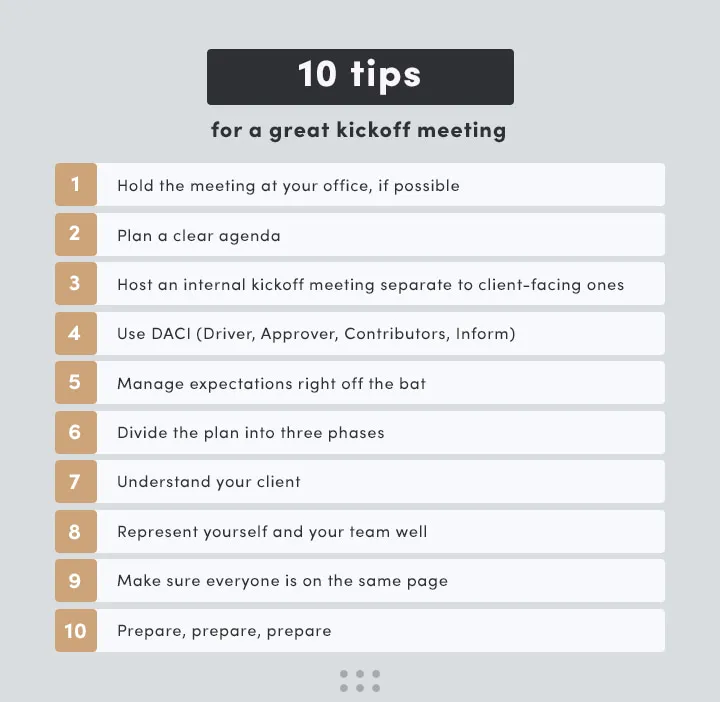
Advice on running your project kickoff meeting could prove invaluable to the success of your project, so make sure you consider what we think are the 10 best tips for an amazing kickoff meeting:
- Hold the meeting at your office, if possible: everyone knows about the home advantage in football, but it works for offices, too! ‘Playing at home’ will help to make your team feel more comfortable and relaxed, thus boosting engagement and energy. Note: Due to the pandemic, you can also run your kickoff meeting remotely taking into consideration our tips on organising remote agile work.
- Plan a clear agenda: you should want your meeting to be concise, so that everyone maintains concentration, but thorough so that you get to say everything that you need to say.
- Host an internal kickoff meeting separate from any client-facing ones: before you even think about introducing your team to clients, make sure that you have met with them privately beforehand. They’ll need to be on the same page as you.
- Use DACI (Driver, Approver, Contributors, Inform): this framework is a great way to assign to team members their roles. You’re likely to have several people in each of these roles, so make sure you play to your team members’ strengths.
- Manage expectations right off the bat: make sure everyone knows what you are looking for from them and from the project overall. You should be the person who translates your clients’ needs into a workload for the team.
- Divide the plan into the following three phases: before the meeting, during the meeting and after the meeting. We’ll explain what should happen at each of these points during the next stage of this article.
- Understand your client: what could be more important? Use the opportunity of the introduction of your team to your client to finalise what your client is looking for and to understand their approach to taking risk so that you know what your limits are.
- Represent yourself and your team well: dress smart, make your space presentable and well-stocked, be energetic and maintain a positive attitude. These things will really help to build a strong relationship with your client.
- Make sure everyone is on the same page about the direction of the project: if anyone has any disagreements about the project, the kickoff meeting is a perfect opportunity for them to voice it before it causes problems later down the line.
- Prepare, prepare, prepare: make sure that you’ve read into the background of your client, who will be attending from their team, their competitors and more so that you can tailor your own approach to get the best out of them.
Read also: 7 Agile Best Practices You Should Know
Try our developers.
Free for 2 weeks.
No risk. Just results. Get a feel for our process, speed, and quality — work with our developers for a trial sprint and see why global companies choose Selleo.
Before the kickoff meeting: agenda
Now, we’re moving closer and closer to the initiation of your kickoff meeting. This is an exciting time, as you are about to embark on the first and one of the most crucial stages of your project as a whole.
But what do we need to do before the kickoff meeting even begins? We’ve put together a checklist for you to consider as you approach those crucial final moments before things kick off.
- Assign a note taker: this one might seem simple but it is often overlooked which can lead to disastrous consequences. A lot will be being said during your kickoff meeting, and you’re not going to be able to remember all of it, so someone needs to be able to write down the key points.
- Decide who’s coming: don’t invite anyone who isn’t fully necessary. You don’t want to waste their time and overcrowd the room without reason. On the flip side, it’s even more important not to miss anyone important out.
- Set the agenda: you’re in control, and everyone in that meeting is going to be looking to you to find out what needs to be discussed. Of course, you don’t want to be talking too much, but you’ll need to direct people to particular points throughout.
- Figure out how much time is needed: now that you know everything that’s going to happen during your kickoff meeting, you’ll need to decide how long the length is going to be so that attendees can schedule it. Make sure to leave time for breaks etc.
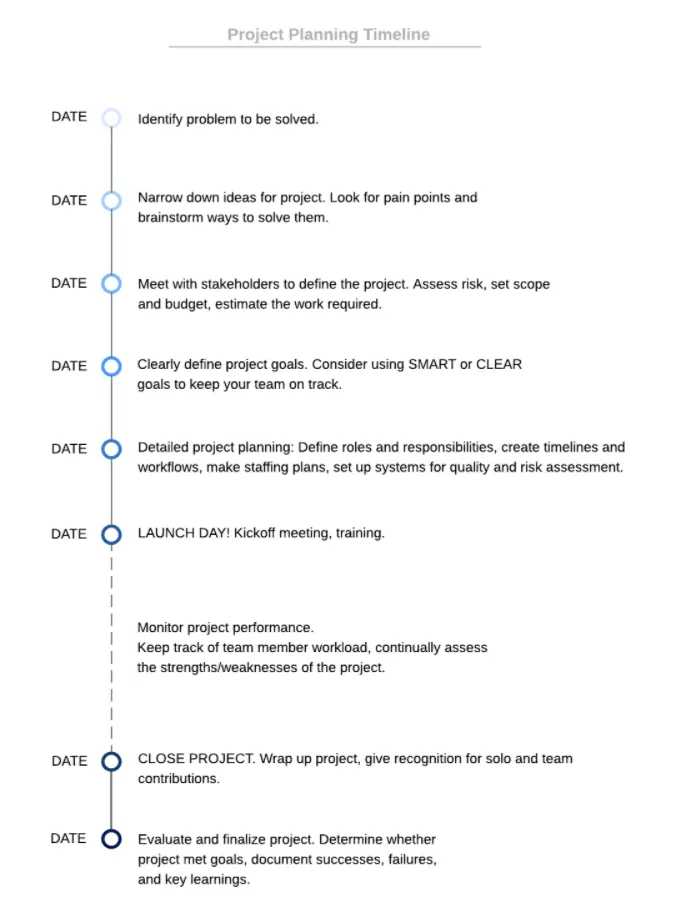
From LucidChart
It would also be a good idea to put together a project planning timeline before you start the meeting. Perhaps print it out, or show it on a screen, so that everybody working on the project can start to appreciate the timescale of the project.
The project timescale should include items such as project initiation, meeting with the project stakeholder, defining the goals of the project, planning, development, testing, launch day etc.
Questions to ask during your kickoff meeting
Alongside making sure that all the members of your project team are up to speed with the scope of the project, you’re going to want to find out a lot of information from them, and from your clients.
For this reason, asking the right questions is key, both of yourself and of other participants to the kickoff meeting. We recommend asking the vast majority of the following questions, as well as more specific ones to your project.
Kickoff meeting checklist to important questions:
Questions for Product
- Are project objectives defined?
- Is the scope of the project defined?
- Did you make a list of deliverables?
- Did you prepare a structure diagram of your future system that contains a mapping of all the apps/services that create the system?
- Did you specify who is the owner of each domain?
- Did you build a glossary of terms and definitions specific to your project?
- Did you think of any potential product risks?
- Did you decide what technology stack will be used?
- Did you choose the tools that will support the development process?
Questions for Process
- Did both sides choose a person-of-contact on their side?
- Did you determine a form of communicating the progress?
- Is Scrum the chosen methodology? Do all the stakeholders understand the assumptions of Scrum?
- Did you determine what is the workflow of delivered features?
- Are the time frames established? Is the length of Sprints defined?
- Did you prepare a roadmap of the whole project?
- Did you secure enough time for automated test coverage on the critical parts of the system?
- Did you define which stakeholders will take part in which meetings?
- Is there an external development team? Did you plan pair programming between the teams?
- Does everybody know their next step to do?
- Did everybody report their needs in terms of access? Does everyone have a required setup to proceed with the development process?
- Did you think of any potential project risks?
- Is everyone aware of their responsibilities within the project?
- Are the work hours defined and accepted by both sides?
Other
- Do you have a set budget in mind?
- Did everyone have a chance to ask potential questions?
- Are there any hot-spots that need to be answered? Is there a list of those hot-spots?
It’s important to differentiate the product and the process as not only are you likely to have different members of the team working more heavily in one area or the other, but it will also make documenting the meeting and therefore planning the rest of the project easier.
So, the meeting is done! What’s next to do?
To-do’s after your kickoff meeting
You’ve made it to the end of your kickoff meeting and you’re happy that everybody is on the same page and ready to get stuck into the project. Congratulations! So, how do we wrap up? There are three important steps to finishing up any kickoff meeting.
Check them out.
Close the meeting
Now that you’ve worked your way through the questions checklist and covered every other part of your kickoff meeting, it’s time to close it. Encourage your team to ask any questions or to voice any concerns that they may have at this stage.
Make sure that everybody involved has your, and each other’s, contact information so that you can reach out to one another moving forwards, and define any communication or collaboration software that will be used.
It would also be a nice touch to send out a summary of the meeting to everyone who attended, and especially those who could not make it to try to bring them up to speed as well.
Document it
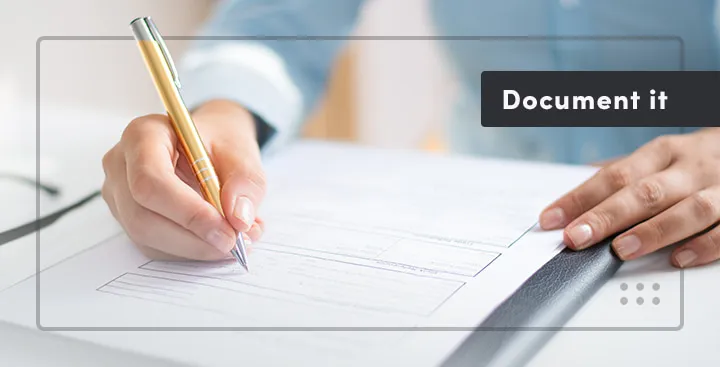
Now, it’s time to partner with the note taker. You don’t need a full, word-for-word transcript of the kickoff meeting but it is a good idea to have the majority of the important points written down so that you know how to put a project plan together.
There are plenty of tools available online that can help with this. They can assist with defining and managing your project as well as keeping project stakeholders up to date.
You’ll also be able to share these documents with your team, and if you wish, to allow them to make edits and updates as they move through the project.
After the kickoff meeting
Now that you’ve concluded your kickoff meeting and documented everything you need, it’s time to get started! But what’s the best way to do that?
One essential tool is a collaborative work management tool or project management software. Here, you can share all of the work, updates and messages between your team, project stakeholders and clients with the minimum of effort and the maximum of efficiency.
Summary
Congratulations on holding your awesome kickoff meeting. You’ve put yourself on the right track to working through a project that everyone involved is going to be happy with, thanks to great communication and planning.
To continue that communication and planning throughout the project and beyond is the next essential step.
We’ve put together project management tools for a whole host of clients, and we’re confident in our ability to help you bring out the maximum amount of efficiency from your team with these tools at your disposal.
Holding an awesome kickoff meeting is a great start but the project has only just begun now. Make sure that you carry that momentum and work with the right people moving forwards.
